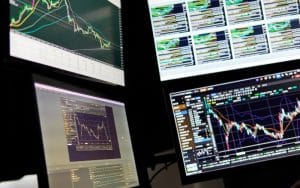What is the World Bank?
World Bank is an international financial organization under the United Nations (UN) system. It has 189 member countries, playing a crucial part in its decision-making processes. Its overall goal is to eradicate poverty and facilitate sustainable long-term developments. Through the four organizations that form the World Bank Group, it is able to avail grants and low-interest loans to governments and private companies. Besides, it avails technical assistance and participates in conflict resolutions.
Origin of the World Bank
The World Bank began its operations in 1944. Initially, it was referred to as the International Bank for Reconstruction and Development. Its original goal was to lend funds to countries that needed to reconstruct their economies after World War II.
In 1956, the bank formed the first institution within itself – the International Finance Corporation (IFC). The role of the new entity is to lend funds to private corporations and financial institutions. Four years later, the International Development Association (IDA) was formed in an effort to fulfill the bank’s goal of poverty eradication. This organization lends money to low-income nations.
Later on, the organization launched the Multilateral Investment Guarantee Agency (MIGA) and the International Centre for Settlement of Investment Disputes (ICSID). MIGA’s role is to advise entities within the private sector to invest internationally. On the other hand, ICSID acts as an intermediary when a foreign country and private investor are in disagreement. Together, the four institutions form the World Bank Group.
Who owns the World Bank?
The World Bank is part of the UN system. Notably, the member countries’ federal governments own the four organizations embedded in the World Bank Group. The nations have the ultimate power to make decisions regarding the institutions’ policies, membership, and finances. This is made possible through the Boards of Directors and Boards of Governors.
For a country to acquire membership at the World Bank, it has to be part of the International Monetary Fund (IMF). This is in accordance with the enacted IBRD Articles of Agreement.
Roles of the World Bank
One of the major roles of the World Bank is to fund development projects in different countries. It does so by offering grants, credits at zero interest, or conventional loans at a low-interest rate.
In addition, to financing government-initiated projects, the bank also invests in the private sector. This is through loans and private-equity funds. Besides, it avails business advisory and asset management services to the companies.
The bank, through the MIGA arm, further offers guarantees against the political risk for the projects established in its member countries. The availed insurance includes intervening in the early stages of a dispute and offering relevant advice on appropriate safeguards. Besides, its ICSID branch operates by mediating in the event of conflicts between countries or a country and investor.
Where does the World Bank source its funds?
The finances loaned by the World Bank are usually borrowed funds. The organization has a wide pool of financial reserves, giving it a good credit score. The sources of its reserves include:
- Contributions from its members, especially the developed countries.
- Fees from its members.
- Refunds from the borrowing countries.
- Funds from capital markets.
- Returns from its investments.



